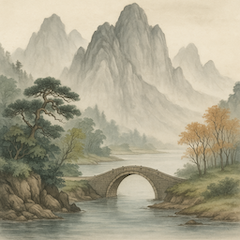
Words shape the world. But they also limit it. Especially when we mistake translation for clarity—when really, it’s an act of interpretation, adaptation, and sometimes… a kind of poetic guesswork.
In this conversation with Sarah Rivkin—a clinician, scholar, and longtime student of language—we talk about what it means to translate not just texts, but meaning itself. Sarah brings a thoughtful lens to the edges where language meets medicine, where history presses against the present, and where the clinical meets the poetic.
Listen into this discussion as we explore the unseen weight of choosing one word over another, the challenges of translating classical Chinese into modern context, how diagnosis itself is a kind of translation, and the subtle power of bias in everything we do—from clinic to scholarship.
Despite how busy you are in clinic, never rush: Slow down, breathe, feel your feet on the floor before you put your hands on another person. We listen with our hands at least as well as we do though our ears, but first we need to quiet the noise around us.

Sarah Rivkin, DAHM, L.Ac
My nineteen years in private practice have focused on reproductive health and pediatrics, Japanese acu-moxa techniques, classical herbal formulas, palpation, and qigong, but I also devote time to writing, editing, translating, and teaching. In my academic work I draw on my background as both a clinician and a lover of text and language to explore the intersection of reading/writing and East Asian medicine.
My articles have been published in Chinese Medicine and Culture, The North American Journal of Oriental Medicine (NAJOM), The Lantern, Convergent Points, and Medical Acupuncture. I’m on the faculty at the Seattle Institute of East Asian Medicine (SIEAM), where I teach classes on clinical writing and case analysis. In addition to an appearance on Qiological, I’ve presented my research at East Asian medical history conferences organized by the International Association for the Study of Traditional Asian Medicine (IASTAM), Max Planck Institute for the History of Science, Tel Aviv University, and Shanghai University of Traditional Chinese Medicine. I’m also a peer-reviewer for Chinese Medicine and Culture, collaborate with colleagues on translating foundational Chinese medical texts, and am on the advisory board of White Pine Circle.
You don't have access to purchase this item.